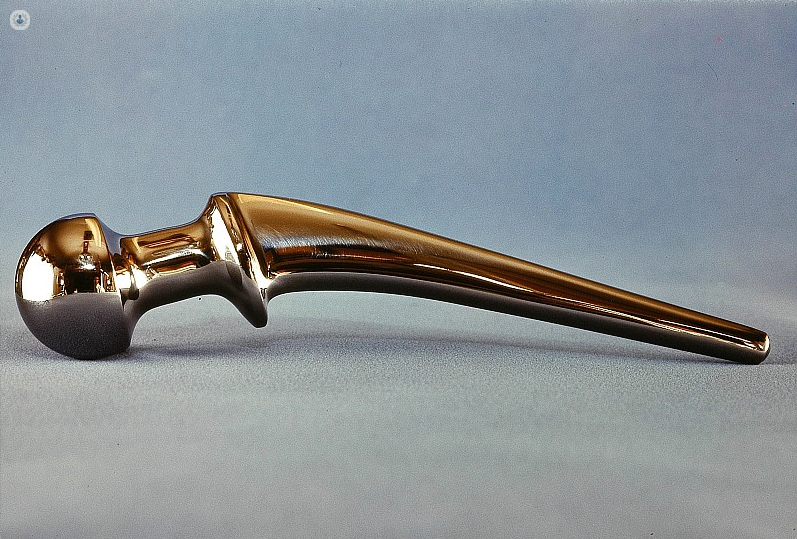Anterior hip replacement is a surgical procedure that involves replacing the hip joint through an incision at the front (anterior) of the hip. This approach is gaining popularity due to its potential benefits, including reduced recovery time and less postoperative pain.
Unlike traditional hip replacement methods that access the hip joint from the side (lateral) or back (posterior), the anterior approach allows surgeons to work between the muscles, avoiding the need to detach them from the hip or thigh bones. Here, renowned consultant orthopaedic surgeon, Professor Richard Field, explains more about how an anterior hip replacement procedure is performed.

The procedure
In an anterior hip replacement, the surgeon makes a small incision at the front of the hip. Using specialised instruments, the surgeon then navigates between the muscles and tissues, allowing access to the hip joint without cutting through major muscles.
The damaged hip joint is then removed and replaced with a prosthetic implant. This technique is considered muscle-sparing, which is believed to contribute to a faster recovery and lower risk of dislocation.
Benefits and considerations
One of the primary benefits of anterior hip replacement is a quicker recovery time. Patients often experience less pain after surgery because the muscles are not cut or detached. Additionally, because the anterior approach involves less disruption to the muscles and tissues, there may be fewer restrictions on movement after surgery, allowing patients to return to normal activities sooner.
Another advantage is a lower risk of dislocation, a common complication in hip replacement surgeries. However, the anterior approach is technically challenging and requires specialised training and equipment. Not all surgeons are experienced in this method, and it may not be suitable for all patients, especially those with certain anatomical variations or severe deformities.
Recovery and rehabilitation
Recovery from anterior hip replacement typically involves a shorter hospital stay, often ranging from one to three days. Physical therapy usually begins immediately after surgery to help patients regain strength and mobility.
Most patients can walk with minimal assistance within a few days and may return to normal activities, such as driving, within two to four weeks. Full recovery generally takes about three to six months, depending on the individual’s overall health and adherence to rehabilitation protocols.



